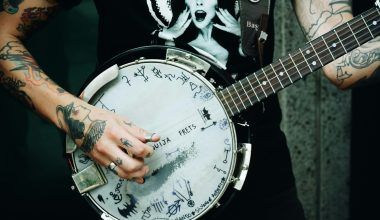Ever wondered, “Do you get paid on YouTube?” The short answer is yes—but it’s not as simple as just uploading videos. Many YouTubers have turned their passion into a profitable career, but getting there requires effort, strategy, and consistency.
If you’re curious about how YouTube payments work, this guide is for you. We’ll explain everything in plain, simple terms so you can understand how to start earning money on YouTube. Let’s dive in!
How Do You Make Money on YouTube?
Yes, you can get paid on YouTube, but there’s no magic button to start earning. You need to meet certain criteria, set up monetization, and provide content people love to watch.
Requirements to Monetize:
To start making money, you need to join the YouTube Partner Program (YPP). Here are the basic requirements:
- At least 1,000 subscribers.
- 4,000 watch hours in the past 12 months OR 10 million Shorts views within 90 days.
- A linked Google AdSense account.
- No major community guidelines violations.
Once you hit these milestones, you can turn on ads, explore other earning options, and finally get paid on YouTube.
Ways You Get Paid on YouTube
So, how exactly do YouTubers earn money? Let’s break it down:
a) Ad Revenue
This is the most common way YouTubers make money. YouTube pays you a portion of the revenue earned from ads shown on your videos. These ads are managed by Google AdSense.
- You’ll earn more if your videos attract viewers from countries with higher advertising budgets.
- Ad revenue varies depending on your niche. For instance, tech or finance channels often earn more per view than lifestyle or entertainment channels.
b) Channel Memberships
Once you qualify, you can allow fans to pay for channel memberships. In return, they get perks like exclusive badges, emojis, or behind-the-scenes content.
c) Super Chats and Super Stickers
During live streams, fans can send paid messages (Super Chats) or fun stickers to stand out. This is an excellent way to connect with your audience while earning extra cash.
If viewers with a YouTube Premium subscription watch your videos, you’ll earn a small portion of their subscription fee.
How Do Payments Work on YouTube?
One common question is, “How do you get paid on YouTube?” Once you’ve set up monetization, payments are handled through Google AdSense. Here’s how it works:
- Revenue Threshold: You must earn at least $100 before Google pays you.
- Monthly Payouts: AdSense processes your earnings every month. Payments are typically made between the 21st and 26th of the following month.
- Payment Methods: You can receive payments through bank transfer, check, or other available methods in your region.
How Much Can You Earn?
How much you earn on YouTube depends on various factors:
- Niche: Topics like tech, finance, or business generally pay more.
- CPM and RPM: These are metrics used to calculate your earnings per thousand views.
- CPM: Cost per 1,000 ad impressions.
- RPM: Revenue per 1,000 views after YouTube takes its cut (usually 45%).
- Audience Demographics: You’ll earn more if your audience is in countries with higher ad spending.
For example, a beauty vlogger might earn $2–$5 per 1,000 views, while a tech reviewer might earn $5–$10.
Tips to Maximize Your Earnings
If you want to get paid on YouTube faster, here are some actionable tips:
a) Pick a Profitable Niche
Choose a topic that combines your passion with audience demand. Research what niches have higher CPM rates to maximize ad revenue.
b) Post Consistently
The more videos you post, the more chances you have to attract views and grow your subscriber base. Try to stick to a schedule.
c) Optimize for SEO
Use relevant keywords (like “Do you get paid in YouTube?”) in your titles, descriptions, and tags. This helps your videos rank higher in search results.
d) Engage With Your Audience
Reply to comments, host live streams, and ask for feedback. Building a loyal fanbase can lead to more views, memberships, and donations.
e) Promote Your Videos
Share your videos on social media, forums, or blogs. Collaborating with other creators can also expose your channel to new audiences.
Other Ways to Make Money on YouTube
In addition to YouTube’s built-in monetization features, many creators earn money through these methods:
a) Sponsorships
Brands often pay YouTubers to promote their products. The more niche your audience, the more likely you are to land sponsorship deals.
b) Merchandise
You can sell custom merch like t-shirts, mugs, or stickers. Platforms like Teespring integrate directly with YouTube, making it easy to set up a shop.
c) Affiliate Marketing
By promoting products and including affiliate links in your video descriptions, you can earn a commission for every sale.
d) Crowdfunding
Some creators use platforms like Patreon to receive monthly donations from fans in exchange for exclusive content.
Common Misconceptions About Getting Paid on YouTube
“You get paid for every video upload.”
Not true. You only earn when your videos generate views, and not every view is monetized.
“You need millions of subscribers to make money.”
False. Many small creators make decent money with just a few thousand subscribers if they focus on a loyal, engaged audience.
“YouTube pays you directly for subscribers.”
Nope! YouTube pays based on views and ad revenue, not subscriber counts.
How Long Does It Take to Start Earning?
Getting paid on YouTube isn’t an overnight process. Building a successful channel can take months—or even years. The key is to stay consistent and focus on providing value to your audience.
Final Thoughts: Is YouTube Worth It?
So, do you get paid on YouTube? Absolutely! But it requires dedication, creativity, and a willingness to learn. For many creators, the journey is as rewarding as the paycheck.
Whether you’re planning to make YouTube your full-time career or just a side hustle, now is the perfect time to start. With the right strategy, you could turn your passion into profit.
This is your ultimate guide to getting paid on YouTube. If you found it helpful, share it with a friend who’s curious about starting a channel. Remember, every successful YouTuber started with zero subscribers—so why not you?
For further reading, explore these related articles:
- Pop Smoke: The Star Who Changed Music Forever
- Unveiling the World of Dance Electronic Songs: A Journey into Beats and Rhythms
For additional resources on music marketing and distribution, visit Deliver My Tune.






